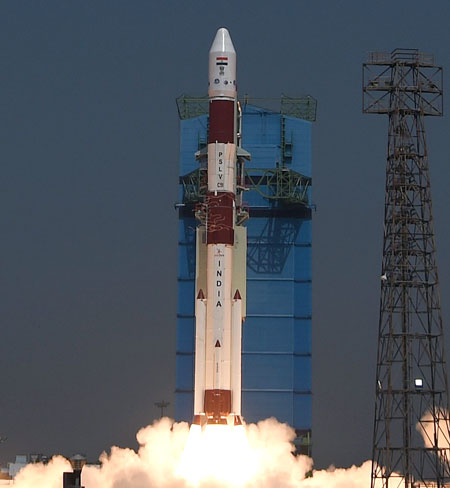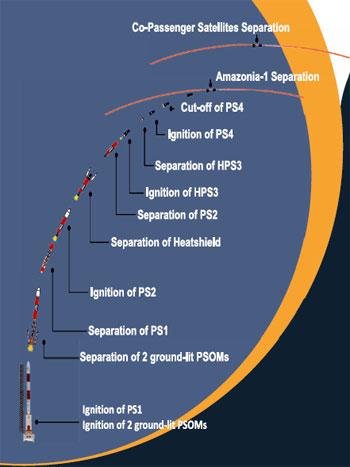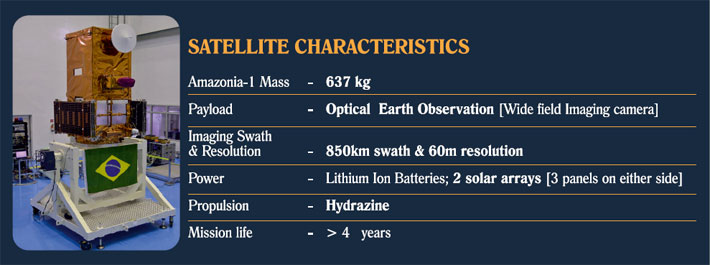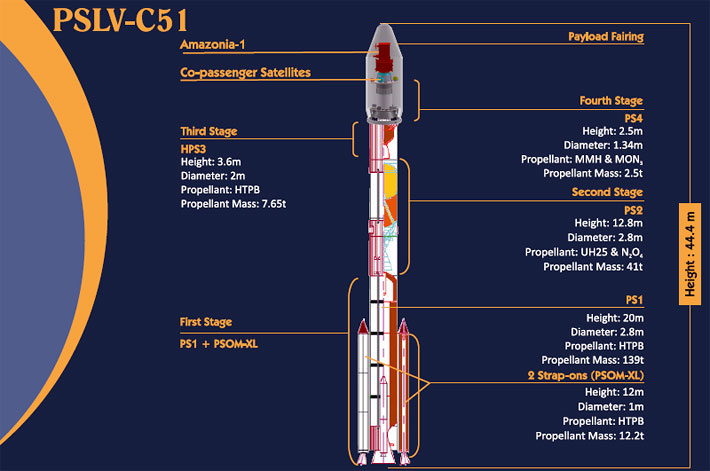INDIAN ARMED FORCES CHIEFS ON OUR RELENTLESS AND FOCUSED PUBLISHING EFFORTS

The insightful articles, inspiring narrations and analytical perspectives presented by the Editorial Team, establish an alluring connect with the reader. My compliments and best wishes to SP Guide Publications.

"Over the past 60 years, the growth of SP Guide Publications has mirrored the rising stature of Indian Navy. Its well-researched and informative magazines on Defence and Aerospace sector have served to shape an educated opinion of our military personnel, policy makers and the public alike. I wish SP's Publication team continued success, fair winds and following seas in all future endeavour!"

Since, its inception in 1964, SP Guide Publications has consistently demonstrated commitment to high-quality journalism in the aerospace and defence sectors, earning a well-deserved reputation as Asia's largest media house in this domain. I wish SP Guide Publications continued success in its pursuit of excellence.
- Prime Minister Modi Visits Punjab’s Adampur Air Base, Interacts with Airmen after Successful ‘Operation Sindoor’; Stern Message to Pakistan
- The layered Air Defence systems that worked superbly, the key element of Operation Sindoor
- Operation Sindoor | Day 2 DGMOs Briefing
- Operation Sindoor: Resolute yet Restrained
- India's Operation Sindoor Sends a Clear Message to Terror and the World – ‘ZERO TOLERANCE’
- Japan and India set forth a defence cooperation consultancy framework, talks on tank and jet engines
With 2021’s first launch, ISRO steers new age of space reforms
India’s PSLV-C51 launched the first satellite designed, integrated and operated by Brazil along with 18 co-passenger satellites.

On February 28, 2021, the lift off from the Satish Dhawan Space Centre in Sriharikota marked the first launch of 2021 for India’s space agency. This was also the first launch by NewSpace India Limited (NSIL), a Government of India company under Department of Space (DoS) as well as the first launch of a Brazilian Satellite from India. India’s Polar Satellite Launch Vehicle PSLV-C51 successfully launched Amazonia-1 along with 18 co-passenger satellites on Sunday from Satish Dhawan Space Centre (SDSC) SHAR, Sriharikota in Andhra Pradesh.
PSLV-C51 lifted off from the first launch pad of SDSC SHAR at 10:24 hours. Following a flight of about 17 minutes, the vehicle injected the Amazonia-1 into its intended orbit and in the succeeding 1 hour 38 minutes, all the 18 co-passenger satellites successfully separated from the PSLV in a predetermined sequence.
All Co-passenger satellites separated from #PSLVC51. Mission accomplished..#ISRO #NSIL #INSPACe #Amazonia1
— ISRO (@isro) February 28, 2021
PSLV-C51 MISSION SPECIFICATIONS
| Primary Satellite | Amazonia-1 |
| Co-passenger | 18 Satellites |
| Orbit | Sun Synchronous Polar Orbit |
| Launch Pad | First Launch Pad |
Source: NSIL

Indian Space Research Organisation (ISRO) Chairman Dr K. Sivan congratulated team ISRO for precise injection of Amazonia-1 and 18 co-passenger satellites. Talking about the primary satellite, Amazonia-1, he said, “India and ISRO feel extremely proud and honoured to launch the first satellite designed, integrated and operated by Brazil. Hearty congratulations to the Brazilian team for this achievement.’’
The sun-synchronous Amazonia-1 would mainly provide remote sensing data in order to monitor deforestation in the Amazon.
Amazonia-1 is the optical earth observation satellite of National Institute for Space Research (INPE). In its statement, ISRO highlighted that the satellite is aimed at providing remote sensing data to users for monitoring deforestation in the Amazon region and analysis of diversified agriculture across the Brazilian territory. The sun-synchronous Amazonia-1 can generate images of any part of the world every five days, but will be used mainly to provide remote sensing data in order to monitor deforestation in the Amazon. This mission of ISRO was primarily constructed around sending Brazil's 637-kg Amazonia-1 satellite into space.

Source: NSIL
Marcos Cesar Pontes, Minister of Science, Technology and Innovation, Brazil also congratulated ISRO team for the successful launch. “Amazonia-1 is an important mission for Brazil which also marks the beginning of a new era for satellite development in the country” he remarked. He emphasised the importance of partnership between India and Brazil and was looking forward to further strengthen ties with India.
"It represents a new era for the Brazilian Satellite Industry. There could be no better place than to be here in India with all our partnerships.” Marcos Cesar Pontes, Minister of Science, Technology and Innovation, Brazil
Congratulating NSIL and ISRO on the success of the 1st dedicated commercial launch of PSLV-C51/Amazonia-1 Mission, India’s Prime Minister Narendra Modi pointed out that this ushers in a new era of Space reforms in the country.
Congratulations to NSIL and @isro on the success of the 1st dedicated commercial launch of PSLV-C51/Amazonia-1 Mission. This ushers in a new era of Space reforms in the country. 18 co-passengers included four small satellites that showcase dynamism and innovation of our youth. pic.twitter.com/BbWYGLsyvo
— Narendra Modi (@narendramodi) February 28, 2021
“Congratulations to President Jair M. Bolsonar on the successful launch of Brazil's Amazonia-1 satellite by PSLV-C51. This is a historic moment in our space cooperation and my felicitations to the scientists of Brazil,” Modi tweeted.
Mr. Narayanan G, Chairman and Managing Director, NSIL thanked INPE, Brazil for their faith in ISRO and NSIL’s strength and M/s Spaceflight Inc. USA for facilitating this mission. He also acknowledged the other auxiliary payloads flown onboard this mission and wished all the customers to achieve their desired goals.
Space Kidz India’s satellite includes an engraved picture of PM Modi symbolising his Atmanirbhar initiative and space privatisation, and an e-copy of the Bhagavad Gita.
NSIL had earlier announced that this mission will carry 15 other customer satellites on commercial ride share basis. However, the 18 co-passenger satellites onboard PSLV-C51 included four from IN-SPACe and 14 from NSIL. The 14 satellites from NSIL were the commercial satellites, one of which was from India and the remaining 13 were from the United States of America (USA).

Source: NSIL
In addition to that, through IN-SPACe, ISRO is also facilitating launch of student satellites in this mission. IN-SPACe (Indian National Space Promotion and Authorisation Center) is an independent nodal agency under DoS for allowing space activities and usage of DoS owned facilities by NGPEs (Non-Government Private Entities) as well as to prioritise the launch manifest.
Through IN-SPACe, ISRO is also facilitating launch of student satellites in this mission.
Of the 4 satellites from IN-SPACe, three were UNITY sats designed and built as a joint development by Jeppiaar Institute of Technology, Sriperumbudur, G.H. Raisoni College of Engineering, Nagpur and Sri Shakti Institute of Engineering and Technology, Coimbatore. The satellite is intended to providing Radio relay services. The fourth one was Satish Dhawan SAT (SDSAT). Built by “Space Kidz India (SKI)” as a co-passenger payload, SDSAT is a nano-satellite intended to study the radiation levels/space weather and demonstrate long range communication technologies. Space Kidz India’s satellite also includes an engraved picture of Prime Minister Narendra Modi on the top panel of the spacecraft Satish Dhawan Sat (SD SAT) symbolising his Atmanirbhar initiative and space privatisation and an e-copy of the Bhagavad Gita, saved on an SD-card along with 25000 names with the ambition of creating awareness and educating the common man about space sciences. The nanosatellite also carries three scientific payloads — one to study space radiation, one to study the magnetosphere, and another that will demonstrate a low-power wide-area communication network.
Launch rehearsal of #PSLVC51 completed today. Launch scheduled at 1024 hrs IST on February 28, 2021.
— ISRO (@isro) February 25, 2021
For more details visit: https://t.co/1OKMDRN95U#NSIL #INSPACe #amazonia1 #ISRO pic.twitter.com/6MtFZvXkAG
“These satellites were fruition of the new space reforms announced by the Government of India wherein ISRO promoted and handheld the teams. I’m very sure this mission will enthuse other academic institutions and industries to build satellites,” Dr Sivan said while appreciating the efforts of the teams in building the satellites.
"Definitely our hands are full. We are going to have something like 14 missions this year. Seven launch vehicle missions and six satellite missions, as well as our first unmanned mission by the end of the year. That is our target and the scientists are working on that", ISRO Chairman Dr K. Sivan.
PSLV-C51 is the 53rd flight of PSLV and 3rd flight of PSLV in 'DL' configuration (with 2 strap-on motors). This was the 78th launch vehicle mission from SDSC SHAR, Sriharikota. With this launch, the total number of customer satellites from foreign countries placed in orbit by PSLV reached to 342 satellites from 34 countries.

Source: NSIL
In line with this success, ISRO has lined up about 14 missions for launch this year, including the space agency's first unmanned mission later this year, Sivan informed after the launch event on Sunday while he was addressing scientists at the Mission Control Centre after the successful launch of Amazonia-1 of Brazil and 18 other satellites. "Definitely our hands are full. We are going to have something like 14 missions this year. Seven launch vehicle missions and six satellite missions, as well as our first unmanned mission by the end of the year. That is our target and the scientists are working on that", he said.
ISRO plans to take up two unmanned space missions before the Gaganyaan-manned space mission which aims at sending three Indians to space by 2022. The four test pilots selected for the mission are currently undergoing training in Russia.
Some of the milestones achieved with the success of this launch include:
- ISRO's first launch of 2021
- First dedicated PSLV commercial mission for NSIL
- Third flight of PSVL-DL variant
- 39th launch from the first launch pad
- 53rd flight of PSLV
- 78th launch vehicle mission from SDSC SHAR





